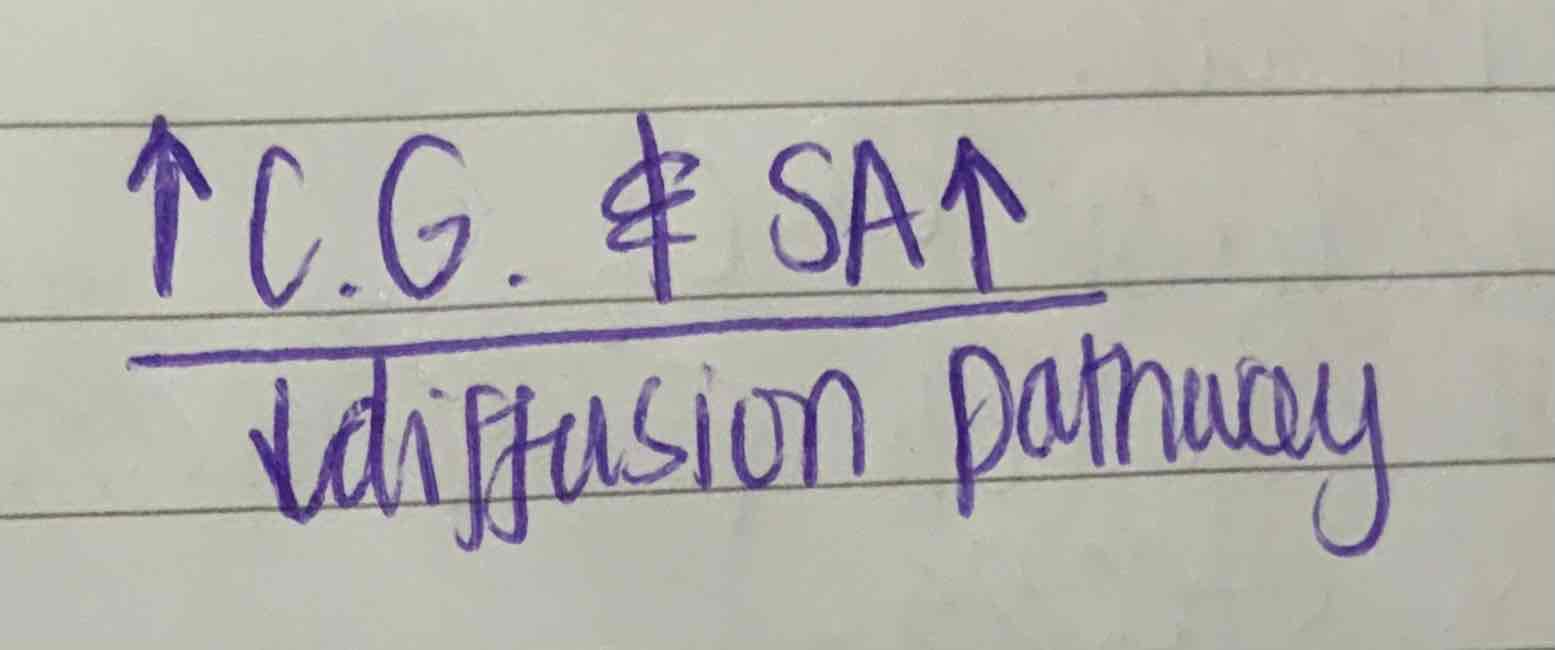Gas Exchange in humans
1/16
There's no tags or description
Looks like no tags are added yet.
Name | Mastery | Learn | Test | Matching | Spaced |
|---|
No study sessions yet.
17 Terms
Name all structures in the human gas exchange system.
Air first enters the trachea.
Air travels into the two bronchi, with one bronchus going to each lung.
Air travels into smaller airways called bronchioles.
Air travels into clusters of air sacs called alveoli at the end of the bronchioles.
What is the trachea?
Airway leading from mouth & nose to bronchi, held up by cartilage
What are the bronchi?
At the bottom of the trachea, there are 2, narrower than trachea but still similar, bronchi lead to bronchioles
What are the bronchioles?
Narrow tubes that carry air from bronchi to alveoli, narrow and have no cartilage and so can collapse
What are the alveoli?
Main site of gas exchange in lungs, tiny sacs with many structural adaptations to enable efficient gas exchange, EG their thin walls & large SA:V ratio
What are some adaptations of alveoli?
alveoli have a lining of thin and squamous epithelium, that allows for gas exchange- squamous epithelium forms structure of alveolar wall & so very thin & permeable for easy diffusion of gases
Each alveolus is surrounded by an extensive network of capillaries- CO2 diffuses out of capillaries into alveoli to be exhaled, while O2 diffuses other way from alveoli & into capillaries to be carried around body
What are the intercostal muscles?
Muscles found between the ribs
What are the 2 types of intercostal muscles?
Internal and external
What does ventilation consist of?
Consists of inspiration (breathing in) and expiration (breathing out), controlled by movements of the diaphragm, internal and external intercostal muscles and ribcage
What is inspiration?
During inspiration:
external intercostal and diaphragm muscles contact
causes ribcage to move up and out, diaphragm flattens
increases volume of thoracic cavity
decreases pressure of thoracic cavity (lower than atmospheric pressure)
air always flows from high pressure to lower pressure (down a pressure gradient)
inspiration is active process- requires energy
What is expiration?
During expiration:
external intercostal muscles and diaphragm muscles relax
ribcage moves down and in, diaphragm curves up again- it becomes dome-shaped
volume of thoracic cavity decreases
pressure in thoracic cavity increases above atmospheric pressure
air is forced down pressure gradient & out of lungs
Explain forced expiration.
external intercostal muscles relax & internal intercostal muscles contract
pulls ribcage further down & in
during this, movement of the 2 sets of intercostal muscles are said to be antagonistic (opposite)
Describe the movement of oxygen from the alveolus to the red blood cells.
Oxygen has to diffuse across the alveolar epithelium and then the capillary endothelium before it can reach the red blood cells (to bind w haemoglobin)- down concentration gradient
What do the epithelial cells line?
Line your organs
what do endothelial cells line?
Line your blood vessels
How are the lungs adapted for efficient gas exchange (fast rate of diffusion)?
Fick’s Law = concentration gradient (increase) x surface area (increase) ———————————————————————————————— diffusion pathway (decrease)
surface area:
many alveoli - surface area (increases)
provide large SA:V ratio
many capillaries (increases)
diffusion pathway:
alveolus epithelium is squamous
capillary endothelium is squamous
capillaries are narrow so RBCs move in single file
RBCs are close to alveoli- allows for more time for diffusion to take place, all RBCs are oxygenated
concentration gradient:
ventilation- brings in oxygen rich air and remove oxygen poor air so there’s always a higher concentration of oxygen in the alveoli compared to the blood in the capillaries

Describe and explain how the lungs are adapted to allow rapid exchange of O2 between air in alveoli & blood in capillaries around them. (8)
The capillary wall is narrow (1 cell thick) so allow time for diffusion to occur, only 1 RBC can pass at a time
Alveoli have short diffusion pathway